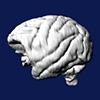-
-
sample data

|
-
-
-
sample data

|
-
sample publication

|
|
Differential connections of the perirhinal and parahippocampal cortex with the orbital and medial prefrontal networks in macaque monkeys.
J Comp Neurol. 2005 Dec 26;493(4):479-509. Kondo H, Saleem KS, Price JL.
Previous anatomical studies indicate that the orbital and medial prefrontal cortex (OMPFC) of monkeys is organized into an "orbital" network, which appears to be related to feeding and reward, and a "medial" network, related to visceral control and emotion. In this study, we examined the connections of the orbital and medial prefrontal networks with the perirhinal (areas 35 and 36) and parahippocampal (areas TF and TH) cortex with anterograde and retrograde axonal tracers. The perirhinal cortex is reciprocally connected with orbital network areas Iapm, Iam, Ial, 13m, 13l, 12r, and 11l. In contrast, the parahippocampal cortex is reciprocally connected with the medial network, especially areas around the corpus callosum (areas 24a/b, caudal 32, and 25), and with area 11m. Projections from the parahippocampal cortex also extend to areas 10m, 10o, Iai, and rostral area 32, as well as to dorsolateral areas 9 and 46. In addition, both the perirhinal and parahippocampal cortex are reciprocally connected with areas that are intermediate between the orbital and medial networks (areas 13a, 13b, and 14c) and with the supracallosal area 24a'/b'. Outside the frontal cortex, the perirhinal cortex and the orbital prefrontal network are both interconnected with the ventral part of the temporal pole (TG), area TE and the ventral bank and fundus of the superior temporal sulcus (STS), and the dysgranular insula. In contrast, the parahippocampal cortex and the medial prefrontal network are connected with the dorsal TG, the rostral superior temporal gyrus (STG) and dorsal bank of STS, and the retrosplenial cortex.
Neuroanatomical Connectivity References
|
|

